The Ultimate Eurofighter Typhoon FAQ:
Everything You Need to Know Ahead of its Time.
I wanted to share with you the Eurofighter Typhoon FAQs as I first saw the EFA (Pre-Production aircraft) at Warton which is the British Aerospace research centre. The EFA was the pre-production development jet. It was a third larger than today’s fighter and underpowered with borrowed engines from the Tornado. The development of this aircraft encompassed primarily new and emerging technologies with amazing engines and very powerful computer systems. Performance was still incredible with the power to weight the pre-production EFA presented. Even in preproduction with Tornado RB199 engines it was so fast only the English Electric Lightening could keep up with it in flight. Watching these take off from Warton always made the hair on my skin stand up. Incredibly exciting so let’s touch on 10 Eurofighter Typhoon FAQ and enlighten you to its abilities.
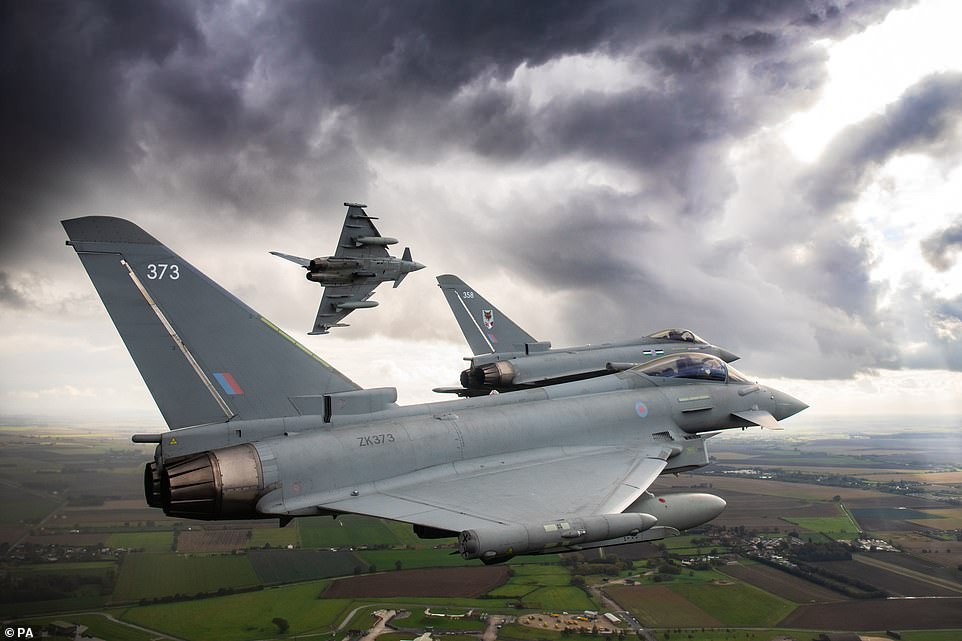
Eurofighter Typhoon FAQ.
Let’s get started with the list of Eurofighter Typhoon FAQ to get answered.
- What is the Eurofighter Typhoon?
- Who manufactures the Eurofighter Typhoon?
- What countries use the Eurofighter Typhoon?
- How fast can the Eurofighter Typhoon fly?
- What is the range of the Eurofighter Typhoon?
- What is the Eurofighter Typhoon’s armament?
- How does the Eurofighter Typhoon compare to other fighter jets?
- What is the cost of the Eurofighter Typhoon?
- What is the Eurofighter Typhoon’s service ceiling?
- What are some notable features of the Eurofighter Typhoon?
What is the Eurofighter Typhoon?

These Eurofighter Typhoon FAQ will explain why this is a highly advanced, multi-role fighter jet designed and built by a consortium of European aerospace companies. It is one of the world’s most advanced aircraft, with cutting-edge technology and unparalleled performance capabilities. The Eurofighter Typhoon was designed to meet the operational requirements of several European countries, including the United Kingdom, Germany, Italy, and Spain. Its primary role is as an air superiority fighter, capable of engaging and defeating enemy aircraft in aerial combat. However, it is also capable of performing a range of other missions, including ground attack, reconnaissance, and electronic warfare.
One of the most notable features of the Eurofighter Typhoon is its advanced avionics suite, which includes an array of sensors, radars, and other electronic systems. These allow the aircraft to detect and track multiple targets simultaneously, and to engage them with a range of air-to-air and air-to-ground weapons. The Eurofighter Typhoon is powered by two EJ200 turbofan engines, which provide it with a top speed of Mach 2.0 and a maximum altitude of over 55,000 feet. It is highly manoeuvrable, thanks to its advanced aerodynamic design, and is capable of performing a wide range of acrobatic manoeuvrers.
Since entering service in the early 2000s, the Eurofighter Typhoon has proven to be a highly effective and reliable aircraft. It has seen combat in several conflicts, including the Libyan Civil War and the ongoing Syrian Civil War, where it has demonstrated its capabilities as a highly capable and versatile platform. Overall, the Eurofighter Typhoon represents a significant achievement in European aerospace technology and serves as a testament to the skill and innovation of the companies and engineers involved in its design and construction. I hope these Eurofighter Typhoon FAQ help you to appreciate this amazing jet fighter.
Who manufactures the Eurofighter Typhoon?
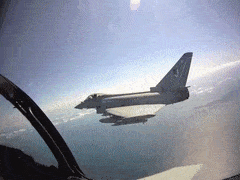
This Eurofighter Typhoon FAQ will highlight why this multirole fighter aircraft designed and manufactured by a consortium of European aerospace companies is so good and who builds it. The consortium, known as Eurofighter GmbH, is based in Hallberg Moos, Germany, and comprises four partner nations: the United Kingdom, Germany, Spain, and Italy. The partners are represented by BAE Systems, Airbus Defence and Space, and Leonardo.
The manufacturing process is distributed among the four partner countries, with each country specializing in different aspects of the production process. The United Kingdom, for example, is responsible for the final assembly of the aircraft, while Germany produces the front fuselage and wings. Spain is responsible for the rear fuselage and tail, and Italy manufactures the centre fuselage components.
Each partner country also produces certain key components of the aircraft. BAE Systems, for instance, is responsible for the Typhoon’s radar and defensive aids subsystems. Airbus Defence and Space produces the aircraft’s high-performance EJ200 engines, while Leonardo provides the avionics systems.
The Eurofighter Typhoon is an advanced fighter aircraft that is designed to perform a range of missions, including air-to-air combat, air-to-ground attack, and reconnaissance. It is one of the most capable and advanced fighters in service today, featuring advanced avionics, stealth technology, and a high degree of manoeuvrability. The Typhoon has been in service since 2003 and is operated by several European air forces, including the Royal Air Force, the German Air Force, and the Italian Air Force.
What countries use the Eurofighter Typhoon?
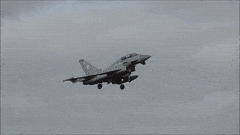
The Eurofighter Typhoon FAQ will explain why this aircraft is a highly advanced, multirole combat aircraft developed by a consortium of European countries. Since its first flight in 1994, the Typhoon has become a cornerstone of Europe’s air defence capabilities, and it is currently operated by five countries.
The United Kingdom, Germany, Italy, Spain, and Austria are the countries that use the Eurofighter Typhoon. The United Kingdom was the first country to introduce the Typhoon into service in 2003, with the Royal Air Force being the largest operator of the aircraft. Germany, Italy, and Spain followed suit, with each country acquiring a significant number of Typhoons for their air forces.
The Typhoon is an impressive aircraft, capable of performing a wide range of missions, including air superiority, ground attack, and reconnaissance. It has a top speed of Mach 2, can fly at altitudes of up to 55,000 feet, and is armed with a range of advanced weapons systems, including air-to-air missiles, air-to-ground missiles, and bombs.
One of the most notable features of the Typhoon is its advanced avionics system, which includes a helmet-mounted display and an integrated defensive aids system. These systems allow the pilot to see and engage targets without having to look down at the cockpit displays and provide advanced situational awareness to the pilot.
In addition to its impressive performance capabilities, the Typhoon is also notable for its production process. The aircraft is built by a consortium of European companies, including Airbus, BAE Systems, and Leonardo, with each company responsible for producing different components of the aircraft. This approach has allowed for the creation of a highly advanced and capable aircraft while also fostering cooperation and collaboration between European companies.
In conclusion, the Eurofighter Typhoon is a highly advanced and capable combat aircraft that is currently operated by five European countries. Its impressive performance capabilities and advanced avionics system make it a cornerstone of Europe’s air defence capabilities, and its unique production process has fostered cooperation and collaboration between European companies.
How fast can the Eurofighter Typhoon fly?
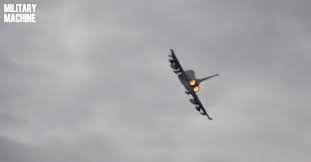
The Eurofighter Typhoon is a twin-engine, multirole fighter aircraft developed by the European consortium Eurofighter GmbH. Its primary role is air superiority, but it is also capable of ground attack and reconnaissance missions. The aircraft is known for its agility and manoeuvrability and is widely considered one of the most advanced and capable fighter jets in the world. In terms of speed, the Eurofighter Typhoon is capable of flying at a maximum speed of Mach 2.0, or roughly 1,550 mph. This is thanks to its powerful twin EJ200 turbofan engines, which provide a combined thrust of over 40,000 pounds. At this speed, the Typhoon is able to cover a range of over 1,000 miles in just an hour, making it a highly effective interceptor and fast response fighter.
In addition to its impressive top speed, the Eurofighter Typhoon is also capable of performing a range of aerobatic manoeuvres at high speeds, thanks to its advanced fly-by-wire flight control system. The aircraft can achieve a maximum rate of climb of 62,000 feet per minute and has a service ceiling of over 55,000 feet. This high-altitude performance is crucial for air superiority missions, as it allows the aircraft to maintain a superior position over potential adversaries. Other key performance data for the Eurofighter Typhoon includes its range, which is approximately 1,400 miles with external fuel tanks. The aircraft has a maximum take-off weight of 51,809 pounds, and a wingspan of 35 feet 11 inches. It is also equipped with a range of advanced avionics and weapons systems, including radar and missile guidance systems, as well as a 27mm Mauser BK-27 cannon.
Overall, the Eurofighter Typhoon is an extremely capable and versatile fighter aircraft, with an impressive range of performance capabilities. Its top speed of Mach 2.0, high altitude performance, and advanced fly-by-wire controls make it a formidable opponent in air-to-air combat, while its ground attack and reconnaissance capabilities make it a valuable asset in a range of mission scenarios.
What is the range of the Eurofighter Typhoon?
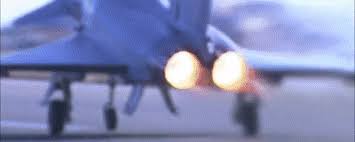
The Eurofighter Typhoon is a twin-engine, multirole fighter aircraft designed and built by a consortium of European aerospace companies. It is one of the most advanced combat aircraft in the world, with a range of capabilities that allow it to perform a wide range of missions, from air superiority to ground attack.
In terms of range, the Eurofighter Typhoon has a maximum combat radius of around 1,000 kilometres, or approximately 620 miles. This means that it is capable of flying up to 1,000 kilometres from its base, engaging targets, and returning home without the need for mid-air refuelling.
However, it’s important to note that the range of the Typhoon can vary depending on a number of factors, including the mission profile, the loadout of weapons and fuel, and the altitude and weather conditions. In some cases, the range may be reduced if the aircraft is carrying a heavy weapons load or if it is flying at low altitude, where there is greater air resistance.
To extend the range of the Typhoon, it can be equipped with additional fuel tanks, allowing it to fly further without the need for mid-air refuelling. The aircraft is also equipped with advanced avionics and sensor systems that allow it to operate effectively in a variety of conditions and environments, from dense urban areas to remote wilderness regions.
Overall, the Eurofighter Typhoon is an extremely capable and versatile fighter aircraft, with a range that is well-suited to a wide range of mission profiles. While its maximum combat radius is around 1,000 kilometres, this can be extended through the use of additional fuel tanks and other measures, allowing it to operate effectively in a variety of scenarios and environments.
What is the Eurofighter Typhoon’s armament?

The Eurofighter Typhoon is a highly advanced multirole fighter aircraft developed by a consortium of European nations including the United Kingdom, Germany, Italy, and Spain. It is designed to perform a wide range of missions including air-to-air combat, air-to-ground attack, and reconnaissance. The aircraft is equipped with a wide range of weapons systems that enable it to perform its mission effectively. Air-to-Air Weapons: The Eurofighter Typhoon is primarily designed for air-to-air combat, and it is equipped with a wide range of weapons to engage hostile aircraft. The aircraft is fitted with a Mauser BK-27 revolver cannon that can fire up to 1700 rounds per minute. The cannon is mounted in the starboard wing root and is capable of firing a variety of ammunition types, including high-explosive, incendiary, and armour-piercing rounds.
In addition to the cannon, the Typhoon can carry a variety of air-to-air missiles, including short-range missiles such as the AIM-9 Sidewinder and the IRIS-T, as well as medium-range missiles such as the AIM-120 AMRAAM and the Meteor missile. The Meteor missile is a highly advanced, long-range air-to-air missile that is capable of engaging targets at ranges of up to 100 km. The missile uses an active radar seeker and advanced data links to provide unparalleled situational awareness to the pilot. Air-to-Ground Weapons: The Eurofighter Typhoon is also capable of performing air-to-ground attacks, and it is equipped with a range of weapons systems to engage ground targets. The aircraft is fitted with a laser designator pod that can be used to guide laser-guided bombs to their targets with high accuracy. The Typhoon can carry a variety of bombs, including the Paveway series of laser-guided bombs and the Joint Direct Attack Munition (JDAM).
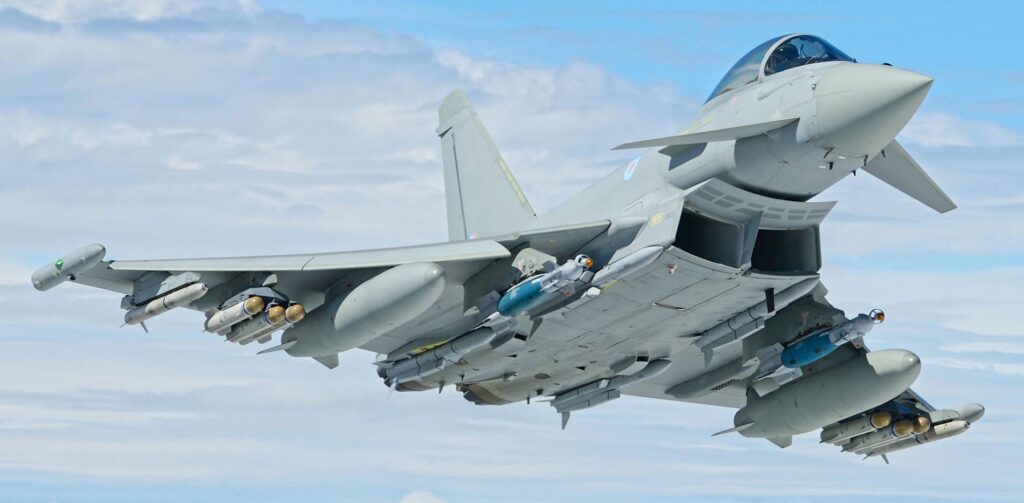
In addition to bombs, the Typhoon can also carry a range of air-to-surface missiles, including the Storm Shadow and the Brimstone missile. The Storm Shadow missile is a long-range, air-launched, stand-off missile that is capable of engaging a variety of ground targets, including bunkers, command centres, and air defence systems. The Brimstone missile is a highly accurate, low-collateral-damage missile that is ideal for engaging moving targets such as tanks and armoured vehicles.
In conclusion, the Eurofighter Typhoon is a highly advanced multirole fighter aircraft that is equipped with a wide range of weapons systems to engage both air and ground targets. Its armament includes a Mauser BK-27 revolver cannon, air-to-air missiles such as the AIM-9 Sidewinder and the Meteor missile, and air-to-ground weapons such as the Paveway series of laser-guided bombs and the Storm Shadow missile. These weapons systems provide the Typhoon with a high degree of flexibility and versatility, making it one of the most capable fighter aircraft in the world.
Revell 03848 Eurofighter Typhoon Baron Spirit, 1:48 Scale Plastic Model kit
Eurofighter Typhoon: Aircraft in Detail (Duke Hawkins)
FloZ British EF2000 Eurofighter Typhoon 1/100 diecast Plane Model Aircraft
How does the Eurofighter Typhoon compare to other fighter jets?

The Eurofighter Typhoon is a fourth-generation multirole fighter aircraft designed and developed by a consortium of European aerospace companies. It is considered one of the most advanced and capable fighter jets in the world. The aircraft’s advanced aerodynamics, powerful engines, and advanced avionics allow it to perform a wide range of missions, including air superiority, ground attack, and reconnaissance. In terms of comparable aircraft, the Typhoon is often compared to other fourth-generation fighters such as the F-15 Eagle, F-16 Fighting Falcon, and the Rafale. The F-15 and F-16 are both American-made fighters that have been in service since the 1970s, but they have undergone numerous upgrades over the years to remain competitive. The Rafale is a French-made fighter that is also considered a fourth-generation fighter and has been in service since the early 2000s.
Compared to these aircraft, the Typhoon has several advantages. For one, it is a more modern design and incorporates advanced technologies that give it a significant edge in terms of speed, manoeuvrability, and situational awareness. It is also equipped with a sophisticated active electronically scanned array (AESA) radar, which provides excellent target detection and tracking capabilities. The Typhoon is also capable of carrying a wide range of weapons, including air-to-air missiles, air-to-surface missiles, and bombs.
Overall, the Eurofighter Typhoon is widely regarded as one of the most advanced and capable fighter jets in the world, and its performance compares favourably to other fourth-generation fighters. Its advanced technologies, sophisticated avionics, and versatile weapon systems make it a formidable opponent in air-to-air combat and a potent force in ground attack and reconnaissance missions.
What is the cost of the Eurofighter Typhoon?
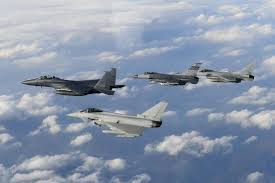
The Eurofighter Typhoon is a twin-engine, multirole fighter aircraft designed and built by a consortium of European aerospace companies. The Eurofighter Typhoon is one of the most advanced fighter aircraft in the world and is used by several air forces including the Royal Air Force, the German Air Force, the Italian Air Force, and the Spanish Air Force. The cost of the Eurofighter Typhoon is a subject of much debate, and it is difficult to give a precise figure due to the complexity of the program and the different variations of the aircraft.
The Eurofighter Typhoon program was initiated in 1983, and the first flight of a prototype occurred in 1994. Since then, over 600 Eurofighter Typhoons have been built and delivered to air forces around the world. The cost of the Eurofighter Typhoon varies depending on several factors, including the number of aircraft ordered, the level of customization required, and the support package provided by the manufacturer. According to publicly available information, the cost of a single Eurofighter Typhoon ranges from around €70 million to €125 million, depending on the variant and the support package. However, this figure does not take into account the development costs of the program, which are estimated to be in the billions of euros.
The Eurofighter Typhoon is a highly advanced aircraft, featuring advanced avionics, stealth technology, and advanced weapon systems. These features come at a cost, and the Eurofighter Typhoon is one of the most expensive fighter aircraft in the world. However, it is important to note that the Eurofighter Typhoon is also one of the most capable and versatile aircraft in the world, capable of performing a wide range of missions, including air-to-air combat, air-to-ground strikes, and reconnaissance.
In conclusion, the cost of the Eurofighter Typhoon is difficult to quantify due to the complex nature of the program and the different variations of the aircraft. However, it is clear that the Eurofighter Typhoon is one of the most expensive fighter aircraft in the world, due to its advanced technology and capabilities. Despite its cost, the Eurofighter Typhoon is a critical component of the air forces that operate it, providing unmatched capabilities and versatility.
What is the Eurofighter Typhoon’s service ceiling?
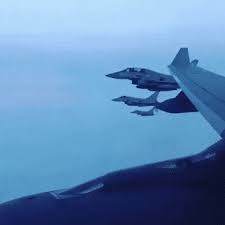
The Eurofighter Typhoon FAQ will enlighten you to the service sealing of this multirole fighter jet designed and built by a consortium of European aerospace companies. It is a highly capable aircraft that has been in service with various air forces since its introduction in 2003. One of the key performance metrics that determines an aircraft’s capabilities is its service ceiling, which is the maximum altitude it can reach while still maintaining a certain level of performance.
The Eurofighter Typhoon has an impressive service ceiling of 55,000 feet (16,764 meters). This means that the aircraft can reach altitudes higher than most commercial airliners and many other military aircraft. The service ceiling is a crucial factor in the aircraft’s operational capabilities, as it affects its ability to engage in air-to-air combat, perform reconnaissance missions, and operate in hostile environments. The Eurofighter Typhoon’s high service ceiling is made possible by several advanced technologies that are incorporated into its design. These include a powerful twin-engine setup that provides ample thrust, advanced avionics systems that allow for precise navigation and targeting, and a highly manoeuvrable airframe that can perform tight turns and evasive manoeuvres at high speeds.
The ability to operate at high altitudes is particularly important for air-to-air combat, as it allows pilots to gain a tactical advantage over their opponents by achieving a superior vantage point. It also enables the aircraft to operate more efficiently, as the thinner air at higher altitudes reduces drag and improves fuel efficiency.
Overall, the Eurofighter Typhoon’s impressive service ceiling is a testament to its advanced technology and superior engineering. It is one of the key factors that makes this aircraft a highly capable platform for a wide range of missions, and it is likely to remain in service with various air forces around the world for many years to come.
RAF Eurofighter Typhoon Patch T-Shirt.
Daron Postage Stamp PS5602 USAF F-35 Version A , Lightning II , 1/144 Scale Diecast Model with Stand
Italeri 0145S – 1: 72 Sr 71 Blackbird.
What are some notable features of the Eurofighter Typhoon?
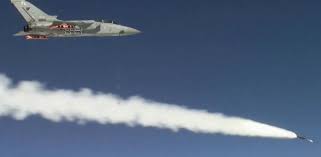
This Eurofighter Typhoon FAQ will highlight some notable features about this twin-engine, multirole fighter aircraft developed by a consortium of European aerospace companies, including Airbus, BAE Systems, and Leonardo. It is designed to be a high-performance, agile, and versatile fighter aircraft capable of carrying out a wide range of missions, including air superiority, ground attack, and reconnaissance. One of the most notable features of the Eurofighter Typhoon is its advanced avionics and sensor suite. The aircraft is equipped with an active electronically scanned array (AESA) radar, which provides superior situational awareness and tracking capabilities, allowing it to detect and engage multiple targets simultaneously. It also has an infrared search and track (IRST) system, which enables the aircraft to detect and track targets using their heat signatures.
The Typhoon’s aerodynamic design is another key feature that sets it apart from other fighter aircraft. It has a delta wing configuration with canards, which gives it excellent manoeuvrability and high angle of attack capabilities. It also has thrust vectoring nozzles, which allow it to change the direction of its engine exhaust to enhance its manoeuvrability. The Eurofighter Typhoon is also equipped with advanced weapons systems, including air-to-air missiles, air-to-surface missiles, and precision-guided bombs. It can carry a variety of weapons, including the Meteor beyond visual range air-to-air missile, which has a range of over 100 km and is considered one of the most advanced missiles in the world.
In terms of performance, the Typhoon is capable of supersonic speeds, with a maximum speed of Mach 2. The aircraft also has a high service ceiling of over 60,000 feet and can fly for extended periods of time thanks to its advanced fuel system. Overall, the Eurofighter Typhoon is a highly capable and versatile fighter aircraft with advanced avionics and sensor systems, aerodynamic design, and weapons capabilities. Its development and production were a major collaborative effort between European aerospace companies, and it is widely considered to be one of the most advanced fighter aircraft in the world.
Eurofighter Typhoon Linage.
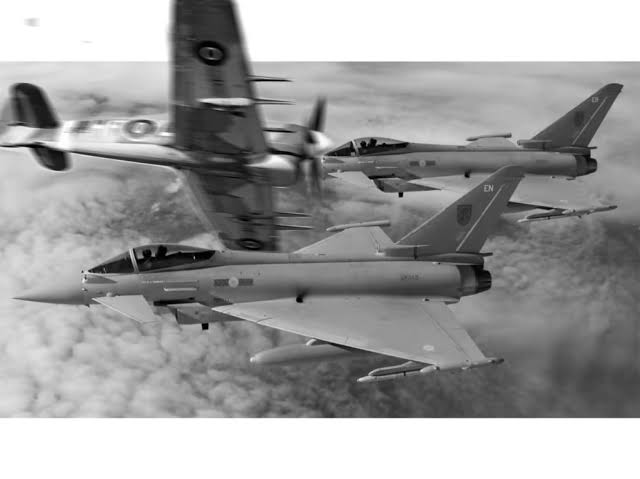
The Eurofighter Typhoon FAQ will explain the link between this multirole fighter aircraft designed and developed by a consortium of European companies, including Airbus, BAE Systems, and Leonardo and its historical little brother. The aircraft was originally known as the European Fighter Aircraft (EFA), but it was later renamed as the Eurofighter Typhoon. The name Typhoon was chosen to represent the strength and power of the aircraft, as well as its ability to operate in a wide range of weather conditions. The previous Typhoon fighter was the Hawker Typhoon, which was a British single-seat fighter-bomber that was used during World War II. The Hawker Typhoon was developed in response to a requirement for a fighter aircraft that could operate at high altitudes and speeds. It was powered by a Napier Sabre engine and was armed with four 20mm Hispano-Suiza cannon.
The Hawker Typhoon had a relatively short operational lifespan, as it was plagued by technical problems and was ultimately superseded by other fighter aircraft, such as the Supermarine Spitfire and the Hawker Tempest. However, the name Typhoon lived on, and it was used as the basis for the name of the Eurofighter Typhoon. The Eurofighter Typhoon is a highly advanced fighter aircraft that is capable of performing a wide range of missions, including air superiority, ground attack, and reconnaissance. It is equipped with a range of advanced avionics and weapons systems, and it is capable of flying at supersonic speeds. The Eurofighter Typhoon is currently in service with a number of European air forces, including the Royal Air Force, the German Air Force, and the Italian Air Force.
Eurofighter Typhoon FAQ Conclusion.
In conclusion, the Eurofighter Typhoon is one of the most advanced fighter aircraft in the world, and answering frequently asked questions about it can help increase public understanding of its capabilities and limitations. By addressing common questions about the Eurofighter Typhoon, such as its range, speed, armaments, and avionics, we can dispel misconceptions and provide accurate information to those who may not be familiar with the aircraft.
Moreover, frequently asked questions can help air force personnel, defence analysts, and military enthusiasts better understand the aircraft’s operational capabilities, which can be crucial when evaluating its performance and suitability for specific mission requirements. One of the key benefits of addressing frequently asked questions is that it can help improve public trust and confidence in military aviation. By providing accurate and transparent information about the Eurofighter Typhoon, we can demonstrate its value as a defensive asset and highlight its role in ensuring national security.
Overall, frequently asked questions about the Eurofighter Typhoon can serve as a valuable tool for enhancing public knowledge and understanding of this highly advanced aircraft. By answering these questions, we can contribute to a greater appreciation for military aviation and highlight the critical role that the Eurofighter Typhoon plays in securing the skies.
Author.
Brendon McAliece is a multi-lingual expat who brings over three decades of flight simulator/PC building experience as well as over two decades of real-world jet fighter experience as a weapons/egress technician. He holds a sport pilot certificate giving him real-world flying experience. Hi travels have taken him from Europe to the Middle East, Asia and his home of Australia. He has a passion for travel, languages, Flight simulation as well as Guitaring and Coffee. You can read more in his blogs below.
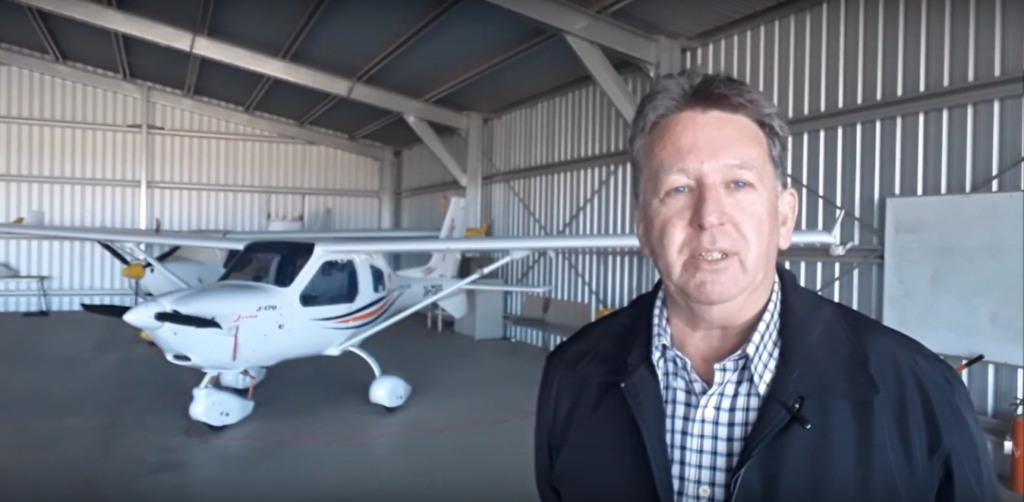
Learn more @
DreamingGuitar.com – DreamingCoffee.com – LetsFlyVFR.com
Home – Blog – Shop – About
As an Amazon affiliate I may earn on qualifying sales.
Learn More @ DreamingGuitar.com – DreamingCoffee.com – LetsFlyVFR.com







